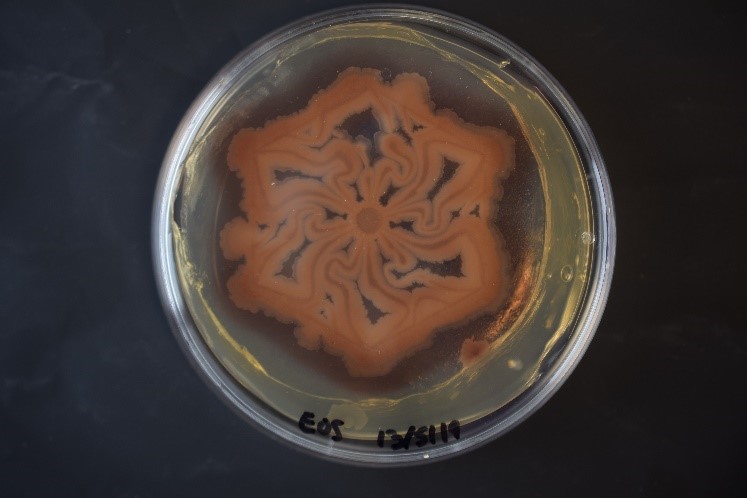Break free of static patterns! Embrace dynamic vortices! Such is the MeniFluidics Manifesto, a biomaterials movement that encompasses science and art. It is, in fact, a movement about movement—the movement of bacteria in biofilms.
MeniFluidics refers to meniscus-driven fluidics, a technique that has inspired its creators (which include physicists and biologists at the University of Warwick) to envision a transformation of tissue engineering and bio-art, as well as new ways to research cellular interactions.
According to these scientists, MeniFluidics can generate living patterns with “precision, robustness, and a low technical barrier.” The scientists have already demonstrated multiscale patterning of biofilm colonies and swarms with submillimeter resolution. While the patterns are admirable, even beautiful, they are most interesting because they are made of living cells, which have many properties that nonliving materials simply don’t.
Details about MeniFluidics appeared in ACS Synthetic Biology, in an article titled, “Pattern engineering of living bacterial colonies using meniscus-driven fluidic channels.” This article indicates that MeniFluidics allows carefully rendered biofilms to emerge not on the canvas, but a gel.
“Utilizing the faster bacterial spreading in liquid channels, MeniFluidics allows controlled bacterial colonies both in space and time to organize fluorescently labeled Bacillus subtilis strains into a converged pattern and to form dynamic vortex patterns in confined bacterial swarms,” the article’s authors wrote. “[MeniFluidics offers] a tool for advancing and inventing new living materials that can be combined with genetically engineered systems, and [for] adding to fundamental research into ecological, evolutional, and physical interactions between microbes.”
The article’s authors suggest that in the creation of engineered living materials (ELMs), MeniFluidics can overcome the limitations of 3D printers, which typically distribute cells in static patterns and suffer from technical complications.
The ability to control the emergent behaviors of cells and organize them into arbitrary patterns is a key step toward utilizing living materials for uses such as organs on a chip. To achieve such control, new technologies such as MeniFluidics are being developed.
Grounded on the physics of meniscus generation, the researchers implemented structures into gel surfaces. Evaporation of water from gel materials lead to formation of open channels which can be used for guiding the direction and speed of cellular expansion.
Vasily Kantsler, PhD, assistant professor in the department of physics at the University of Warwick, said, “I believe that our catchy named (Menifluidics) technique will enable new opportunities in biophysical and biomedical research and applications such as antibiotic resistance and biofouling.”
Munehiro Asally, PhD, associate professor from the School of Life Science at the University of Warwick, added, “We hope MeniFluidics will be used widely by biophysics, microbiologists, engineers, and also artists! It is a simple and versatile method.”






